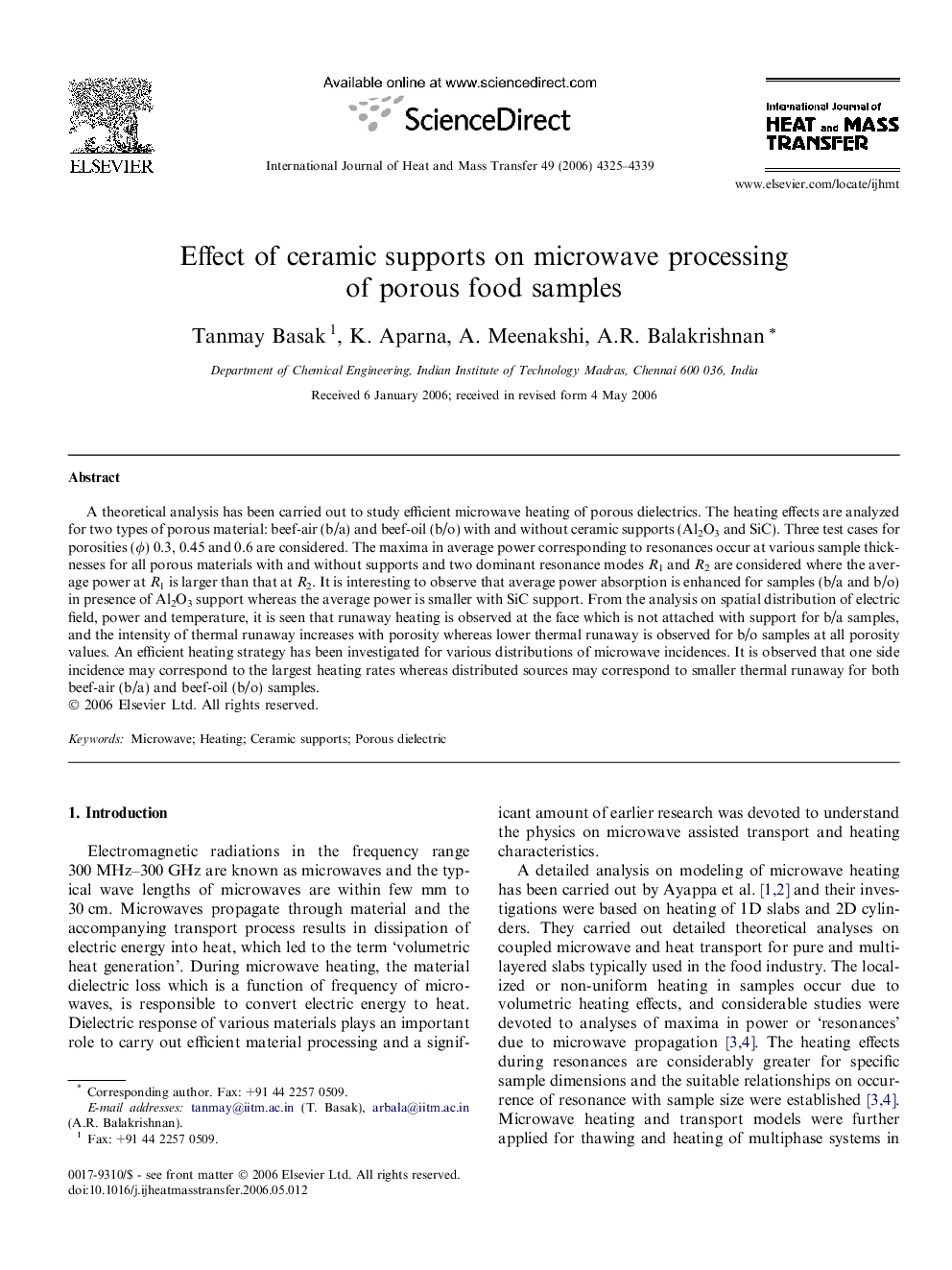| Article ID | Journal | Published Year | Pages | File Type |
|---|---|---|---|---|
| 661897 | International Journal of Heat and Mass Transfer | 2006 | 15 Pages |
Abstract
A theoretical analysis has been carried out to study efficient microwave heating of porous dielectrics. The heating effects are analyzed for two types of porous material: beef-air (b/a) and beef-oil (b/o) with and without ceramic supports (Al2O3 and SiC). Three test cases for porosities (Ï) 0.3, 0.45 and 0.6 are considered. The maxima in average power corresponding to resonances occur at various sample thicknesses for all porous materials with and without supports and two dominant resonance modes R1 and R2 are considered where the average power at R1 is larger than that at R2. It is interesting to observe that average power absorption is enhanced for samples (b/a and b/o) in presence of Al2O3 support whereas the average power is smaller with SiC support. From the analysis on spatial distribution of electric field, power and temperature, it is seen that runaway heating is observed at the face which is not attached with support for b/a samples, and the intensity of thermal runaway increases with porosity whereas lower thermal runaway is observed for b/o samples at all porosity values. An efficient heating strategy has been investigated for various distributions of microwave incidences. It is observed that one side incidence may correspond to the largest heating rates whereas distributed sources may correspond to smaller thermal runaway for both beef-air (b/a) and beef-oil (b/o) samples.
Related Topics
Physical Sciences and Engineering
Chemical Engineering
Fluid Flow and Transfer Processes
Authors
Tanmay Basak, K. Aparna, A. Meenakshi, A.R. Balakrishnan,
